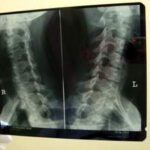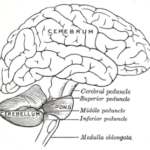The least common, but most serious form of cerebral palsy is ataxic cerebral palsy. It is neither communicable nor progressive. Ataxic cerebral palsy is typically caused by damage to the spinal cord and cerebellum, resulting in severe diminution of motor skills and a significant reduction in the ability to control bodily movement. Ataxic cerebral palsy is manifested by interruptions in the balance center of the brain.
The predominant number of cases of ataxic cerebral palsy are the result of factors that occurred during the development of the fetus or immediately after birth. Ataxic cerebral palsy can create serious problems with a patient’s balance and depth perception, in addition to affecting coordination skills. Those children suffering from this form of cerebral palsy are generally unable to move either very quickly or with precision.
Some patients also suffer from tremors that occur when attempting to make any voluntary movement. This type of tremor is notable for the fact that it increases in intensity when the movement is specifically toward an object, such as reaching for an object on a shelf. This tremor can also be manifest when the patient tries to hold an object in his hand. The person suffering from ataxic cerebral palsy therefore finds it very difficult to accomplish the simplest of tasks.
The overwhelming characteristic of ataxic cerebral palsy is an absence of coordination, resulting in the patient appearing to be constantly be off-balance. In addition, these children tend to suffer a lack of muscle tone, which makes their limbs floppy and loose. Perhaps the most important differentiation between ataxic cerebral palsy and other types of cerebral palsy is that ataxic is the only form that gets worse as the patient ages.
At present the treatment options for ataxic cerebral palsy are few and gene therapy is not included. Part of the problem with treatment is that diagnosis usually doesn’t occur after health problems have already been manifested. For this reason, treatment of ataxic cerebral palsy focuses observable conditions. Radiation therapy is usually avoided because it increases the risk for further damage to the chromosomes as well as tumor growth. The use of antioxidants has been recommended to reduce cell damage, but this treatment has not been scientifically tested.
Neurological symptoms:
- difficulty swallowing, causing choking and drooling
- slurred speech
- progressive lack of eye movement control
- muscle weakness and poor reflexes
- initially normal intelligence regression to the mildly retarded range
Cutaneous symptoms:
- itchy skin
- pale brown areas of skin
- cutaneous atrophy (a look of wasting away)
- hypo- and hyperpigmentation (under pigmented and overpigmented areas of skin)
- loss of skin elasticity
- nummular eczema (coin-shaped inflammatory skin condition)
Other ataxic cerebral palsy symptoms:
- slowed growth
- susceptibility to neoplasmic tumors or growths
- endocrine abnormalities
- tendency to develop insulin-resistant diabetes in adolescence
- prematurely graying hair
- recurrent sinopulmonary infection (involving the sinuses and the airways of the lungs)
- characteristic loss of facial muscle tone
- absence or dysplasia (abnormal development of tissue) of thymus gland
- jerky, involuntary movements



